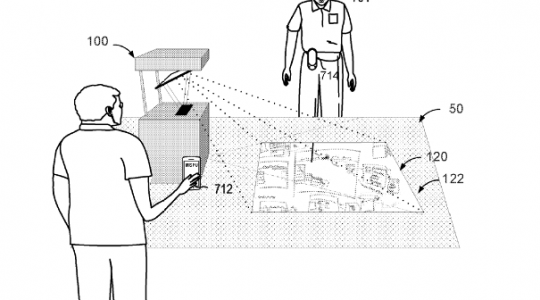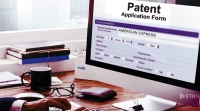Microsoft’s Surface table (now PixelSense) was always a great technology held back by the massive cost of having such a huge high-resolution multi-touch screen.
Now Microsoft has applied for a new patent “INTERACTIVE INTEGRATED DISPLAY AND PROCESSING DEVICE” which should make the technology cheaper and more realistic for mass adoption.
The patent describes an integrated PC and projector with sensors (such as a camera or IR depth sensors) which could be placed on a surface such as a large table and then turn that table into a large-screened computing device.
Microsoft writes:
Often, users of computing devices need to share information with other users and collaborate on common information. Various information sharing services allow users of their computing devices to exchange information. Many services provide some form of visualization for this information exchange.
The technology, roughly described, includes an integrated processing and projection device which can rest on a supporting surface provides interactivity between users. The interactivity is provided in a projected display area projected by the device on the supporting surface. The integrated processing and projection device includes a processor and a projector designed to provide a display on the supporting surface of the device. Various sensors enable object and gesture detection in the display area. An interactive service, provided using the device or a network connected host, enables users of companion processing devices to interact in the display area of the integrated processing and projection device using the companion devices, via an interface in the display provide by the projector. Users without companion devices can interact with users of companion devices using an interface provided in the display area.
An integrated processing system includes a display projector provided in a housing adapted to be supported by a surface. The display projector is adapted to display an interface in a display area on the supporting surface. The system includes an RGB camera and an infrared emitter and detector, wherein the RGB camera and the infrared detector each have a field of view encompassing a detection area including at least the display area. The system includes a communication interface receiving input and providing output to associated devices. The system includes a processor and memory having code operable to instruct the processor to receive input from one or more associated devices via the communication interface, the input comprising at least data to be shared in the display area, and provide an output in the display area of the data to be shared based on input instructions from the one or more associated devices.
Like many patents the idea is not very novel, but as described appears very practicable with currently available technology such as Kinect sensors and would of course be a lot cheaper than the $12,000 Surface Hub, while also not taking up much space when not in use, and being resistant to damage and dirt.
The patent was applied for in May 2015, and included staff from Microsoft’s Education workshop and marketing departments, presumably reflects some of Microsoft’s recent thinking and suggests we may see something like this marketed at schools in the future.
Source: mspoweruser.com











